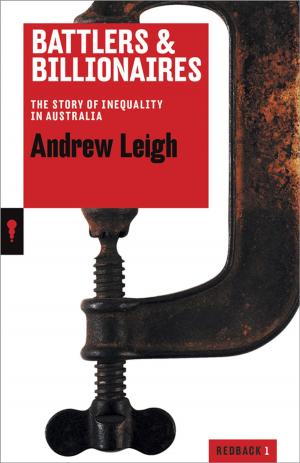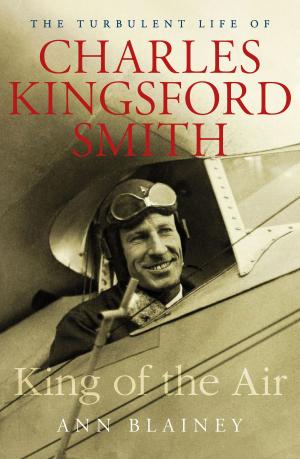After the Blast
An Australian officer in Iraq and Afghanistan
Biography & Memoir, Historical, Nonfiction, History| Author: | Garth Callender | ISBN: | 9781925203301 |
| Publisher: | Schwartz Publishing Pty. Ltd | Publication: | June 27, 2015 |
| Imprint: | Black Inc. | Language: | English |
| Author: | Garth Callender |
| ISBN: | 9781925203301 |
| Publisher: | Schwartz Publishing Pty. Ltd |
| Publication: | June 27, 2015 |
| Imprint: | Black Inc. |
| Language: | English |
A very Australian story of heroism and healing.
In 2004 Garth Callender, a junior cavalry officer, was deployed to Iraq. He quickly found his feet leading convoys of armoured vehicles through the streets of Baghdad and into the desert beyond. But one morning his crew was targeted in a roadside bomb attack. Garth became Australia’s first serious casualty in the war.
After recovering from his injuries, Garth returned to Iraq in 2006 as second-in-command of the Australian Army’s security detachment in Baghdad. He found a city in the grip of a rising insurgency. His unit had to contend with missile attacks, suicide bombers and the death by misadventure of one of their own, Private Jake Kovco.
Determined to prevent the kinds of bomb attacks that left him scarred, Garth volunteered once more in 2009 – to lead a weapons intelligence team in Afghanistan. He was helicoptered to blast zones in the aftermath of attacks, and worked to identify the insurgent bomb-makers responsible.
Revealing, moving, funny and full of drama, Garth Callender’s story is one of a kind.
Winner, Military History Prize at the 2016 Waverley Library Awards
‘I urge you to read this important, engaging book. There are so few firsthand accounts from our frontline soldiers in Iraq and Afghanistan.’ —Leigh Sales
‘Garth Callender shows you what soldiers really think – and, more importantly, feel.’ —James Brown, author of Anzac’s Long Shadow
‘After the Blast takes its place among the very best.’ —The Age
‘A brilliantly told tale’ —Country Style
Garth Callender left the regular Australian Army in 2013 after a distinguished seventeen-year career, during which he served in Iraq and Afghanistan and rose to the rank of major. He left an enduring legacy in weapons technical intelligence, and trained many hundreds of soldiers from raw recruits through to deployment. He now works for an Australian technology company that is developing new ways to detect concealed explosives.
A very Australian story of heroism and healing.
In 2004 Garth Callender, a junior cavalry officer, was deployed to Iraq. He quickly found his feet leading convoys of armoured vehicles through the streets of Baghdad and into the desert beyond. But one morning his crew was targeted in a roadside bomb attack. Garth became Australia’s first serious casualty in the war.
After recovering from his injuries, Garth returned to Iraq in 2006 as second-in-command of the Australian Army’s security detachment in Baghdad. He found a city in the grip of a rising insurgency. His unit had to contend with missile attacks, suicide bombers and the death by misadventure of one of their own, Private Jake Kovco.
Determined to prevent the kinds of bomb attacks that left him scarred, Garth volunteered once more in 2009 – to lead a weapons intelligence team in Afghanistan. He was helicoptered to blast zones in the aftermath of attacks, and worked to identify the insurgent bomb-makers responsible.
Revealing, moving, funny and full of drama, Garth Callender’s story is one of a kind.
Winner, Military History Prize at the 2016 Waverley Library Awards
‘I urge you to read this important, engaging book. There are so few firsthand accounts from our frontline soldiers in Iraq and Afghanistan.’ —Leigh Sales
‘Garth Callender shows you what soldiers really think – and, more importantly, feel.’ —James Brown, author of Anzac’s Long Shadow
‘After the Blast takes its place among the very best.’ —The Age
‘A brilliantly told tale’ —Country Style
Garth Callender left the regular Australian Army in 2013 after a distinguished seventeen-year career, during which he served in Iraq and Afghanistan and rose to the rank of major. He left an enduring legacy in weapons technical intelligence, and trained many hundreds of soldiers from raw recruits through to deployment. He now works for an Australian technology company that is developing new ways to detect concealed explosives.















